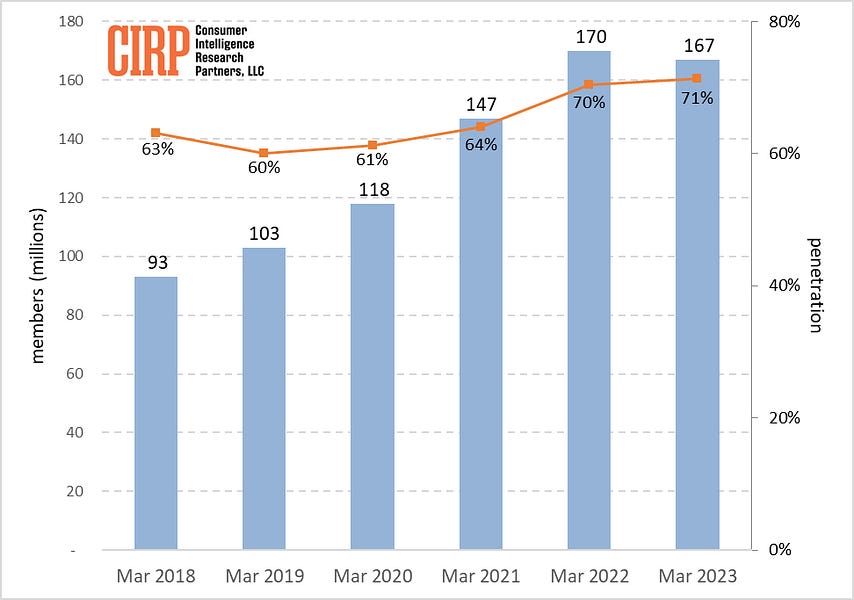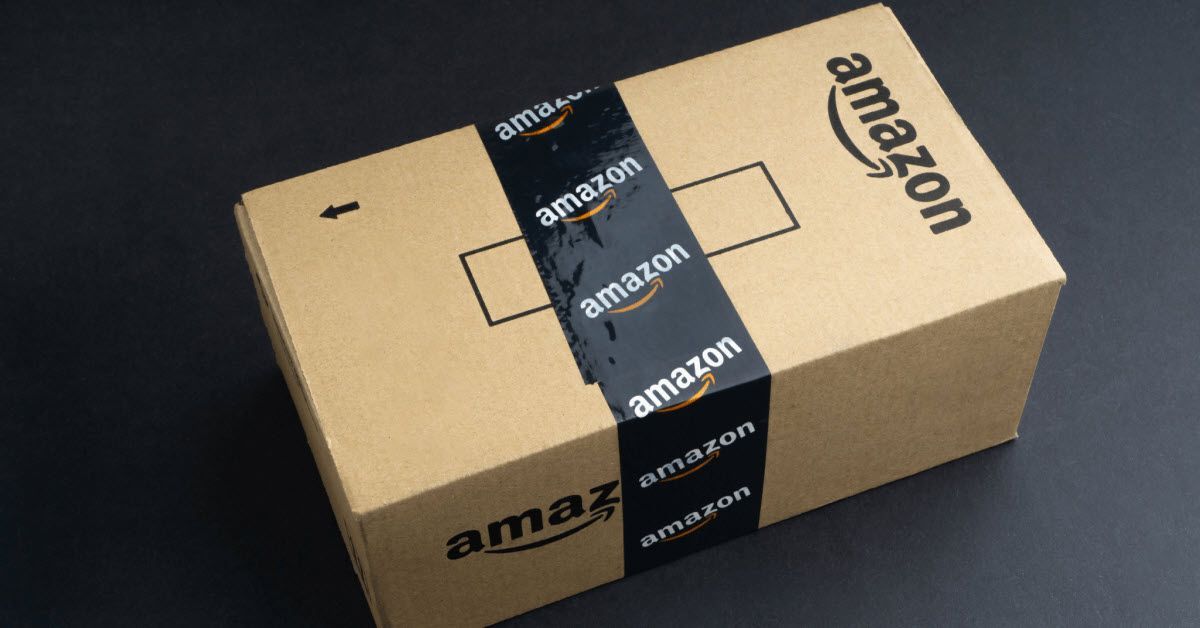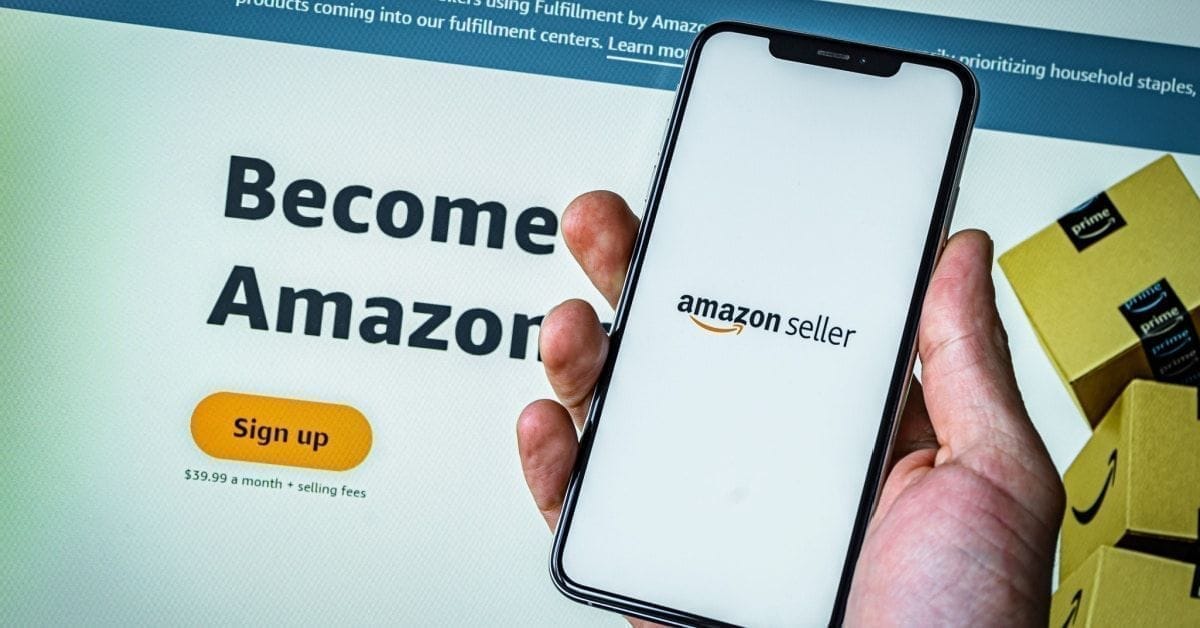Amazon Prime Growth Flat As Price Increases & Service Lags
A new report from Consumer Intelligence Research Partners (CIRP) suggests Prime membership has stagnated a year after Amazon increased the annual price from $119 to $139.
CIRP estimates both the total US membership and the penetration into the total Amazon customer base, looking at the number of individuals who use Prime benefits, not the number of households that pay for Prime.

CIRP estimates 167 million US Amazon customers had a Prime membership as of the March 2023 quarter. This is essentially unchanged from our 170 million estimate for the March 2022 quarter (Chart 1).
The share of Amazon customers that are Prime members has also leveled off, at approximately 70%. As of the March 2023 quarter, 71% of Amazon transactions were made by Prime members, similar to the 70% in the March 2022 quarter.
US Amazon Prime membership growth had started to slow in the 2019-2020 period, only to rebound during the COVID-19 pandemic period. That rebound may have been the last significant membership bump for Amazon Prime in the US, as it may have finally reached the theoretical and practical limit. The return to in-person shopping and current economic uncertainty put further pressure on membership.
Amazon Prime of course adds new US members each quarter, but now, just enough to sustain the member count. This is a far cry from the years of double digit growth.
In addition to the macroeconomic landscape and the price increase for Prime, many buyers are questioning the value of the membership in light of increasingly slower delivery times.
Amazon is currently facing a class action lawsuit on the matter, with accusations of false advertising and consumer harm due to not living up to the Prime delivery promise.

The lawsuit alleges:
Through its uniform advertising claims, Defendant Amazon misrepresents its “Amazon Prime” membership. (“the Product”) on a statewide and nationwide basis. Amazon markets specific benefits that consumers will receive by purchasing the Product, including “same day” or “two day” delivery and shipping speeds. However, in reality, the Product does not provide actually provide its advertised benefits.
Likewise, purchase of the Product does not confer the benefit of delivery within two days or within the same day. Consumers who purchase the Product, and subscribe to the Amazon Prime Membership, are often waiting substantially beyond the same day and more than two days for ordered items.
Value Added Resource reader JoAnn says Walmart has replaced Amazon for many online orders.
I've dramatically reduced my Amazon purchases due the issues mentioned on this page. Walmart's Plus program has replaced Amazon here for the items that they also have, which is about 80 percent in my case, and I've been extremely happy with what has turned out to be incredibly fast shipping times.
In many cases when I've ordered an item to be shipped to me, I've found it on my porch the same day since they sent it from the local store instead. I have never been a fan of Walmart but hey, if Amazon can't perform, I'll find another company that will.
Another commenter, Disgruntled, agreed.
For items ordered online, I've been ordering from Walmart lately, when possible. Delivery times for most things not in-store has usually been 2-3 days. There are alternatives to Amazon out there. I've also tried when possible to get back to supporting brick-and-mortar stores that Amazon has almost destroyed (with the help of us consumers, of course).
And you know Amazon is in trouble when they are losing sales to eBay over shipping speed as this comment from lmsmithxpe indicates.
My prime just renewed and the bill charge was $150. I was going to cancel, but my wife said she was ordering a good many things. Our 2 day shipping used to be 2 to 3 days for delivery. Now we are lucky to see it in a week.
I have specifically started buying more from Ebay, because I can get it faster and for the same price or cheaper. I think this will be my last year on Prime.
Have you recently canceled your Amazon Prime membership due to increased costs or slower delivery times? Let us know in the comments below!






 Concerned
Concerned












